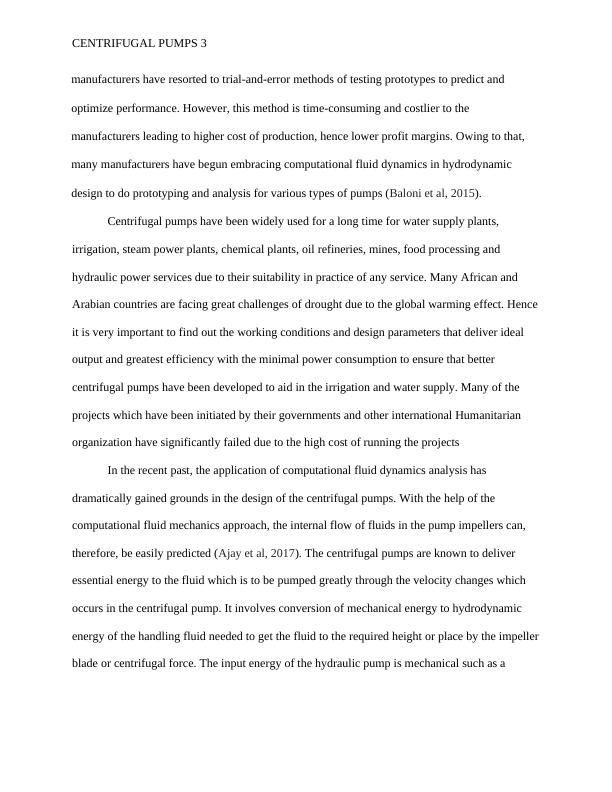Characteristics of Centrifugal Pumps with Low Specific Speed
The assignment is a literature review on fatigue failure in the context of a research project in the field of engineering technology.
24 Pages5414 Words311 Views
Added on 2023-06-14
About This Document
This study presents the characteristics of the centrifugal water pump with low specific speed. The relationships between the vane exit angle, impeller diameter and blade width at the exit are studied in order to evaluate the characteristics of the centrifugal pump. The report aims at the evaluation of the performance of a centrifugal pump for the above-mentioned specifications. Experimental design optimization (DoE) uses response surface method (RSM), computational fluid dynamics (CFD) optimization and analysis are performed on the ready-made models to virtually simulate the performance and compare with results obtained from experiments.
Characteristics of Centrifugal Pumps with Low Specific Speed
The assignment is a literature review on fatigue failure in the context of a research project in the field of engineering technology.
Added on 2023-06-14
ShareRelated Documents
End of preview
Want to access all the pages? Upload your documents or become a member.
(PDF) Introduction to fluid mechanics
|8
|1753
|48
Optimization of Centrifugal Pump by Fluid Mechanics
|7
|2937
|349
Optimization of Centrifugal Blower Parameters and Their Effect on Efficiency
|4
|1646
|189
Fluid Mechanics CFD Analysis of Axial Flow Pumps
|39
|4801
|108
Transportation of Fly-Ash Slurry for Mechanical Engineering Students
|8
|1743
|150
Design Optimization of Rotary Compressors
|21
|5867
|48






